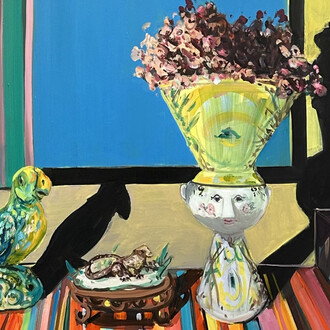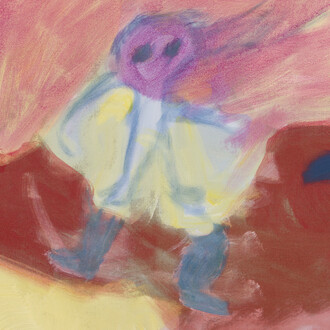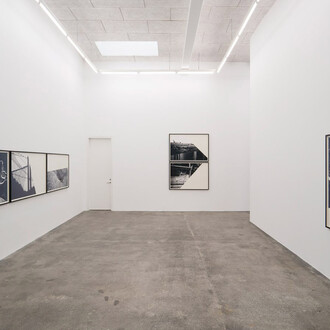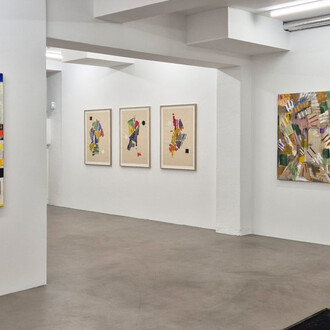In agential realism’s reconceptualization of materiality, matter is a dynamic intra-active becoming that never sits still (…) Matter’s dynamism is generative not merely in the sense of bringing new things into the world but in the sense of bringing forth new worlds, of engaging in an ongoing reconfiguring of the world.
(Karen Barad, excerpt from Meeting the Universe Halfway, 2007)
It has long been a fact, that we in the gallery have a penchant for the matter of materiality and textures, and that we love artists who uncompromisingly experiment with the tactility of their works, and dare to implement a broad mix of unconventional materials in their production too. As Karen Barad’s writing has shown us, attending to the dynamic nature of material reality, changes the possibilities of knowledge and certainty. This means that material arrangements of the experimental situation are an important and constitutive component of the physical reality they measure.
Thus Marie Kirkegaard is delighted to invite you to our group show, Material Matters, featuring a selection of all the wonderful materials and techniques - traditional as well as untraditional – used in the art making of today. The exhibition presents a wide group of artists, that each in their own way capture the idea that matter and material agency contribute to how reality comes to be configured (and perceived). The shape, size, weight, and availability of materials, the behaviour of the matter we are studying, and other contingent material conditions actively shape the world we live in and study.
In Rieko Hotta’s (b. 1977) Plastic Humanity Series made for the exhibition, she creates object collages in the concept of embodied abstraction with physicality. Without a specific focus she uses various tactile elements from random factors as materials for expression in her works.
Manuel Ocampo (b. 1965) joined Anders Brinch (b. 1971) at his studio. The result of this meeting was among else a large painting, produced side by side in collaboration between the two painters.
Kazuki Nakahara (b. 1980) visualizes the movements of the phenomenon of light through his drawings. He draws repetitive short lines with regular hand-movement on the paper as an endless same gesture, thus marking the edges of different forms of light.
Philip Grözinger’s (b. 1972) paintings show sinister worlds awash with color. The settings has a post-apocalyptic atmosphere, populated and loaded with artifacts of an erstwhile civilization, realized in an abstract narrative of a seeming chaos of oil, acrylic, pastel crayons and spray paint.
Alessandro Moroder’s (b. 1989) paintings are investigations in mark making, indexical examination, and site specificity. Choosing a specific location, the paintings are performances in their physicality as the canvases are abraded by burying them with the immediate surroundings of dirt, soil, and enamel. The excess debris and pigment is then striped away to discover a new vernacular of subtraction and immediacy, asserting its’ surfaces as a vulnerable membrane: each mark cataloguing the process in the study of material, action, and chance.
Mette Vangsgaard’s (b. 1968) characteristic experimental, eclectic and unpolished style is defined by her cross-media works, which awakes a poetic realism, a humoristic but profound observation of everyday life and an exploration of man’s existential cohesion with our surroundings.
With Johanne Skovbo Lasgaard (b. 1985) the materiality itself is the narrative. Through the physical experience she maintains a constancy in her practice arising from a focus on the process, the repetition and on a material sensibility, leading us into an artistic space where the works invite us to perceive and sense.
John Knuth’s (b. 1978) new collages for the show, he utilizes the highly reflective silver Mylar from thermal blankets layered with newspaper scraps, polaroid photos and leftover materials from the making of his fly paintings, thus bridging his own artistic process to reveal new avenues of perception.
















